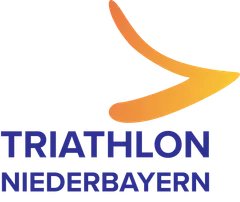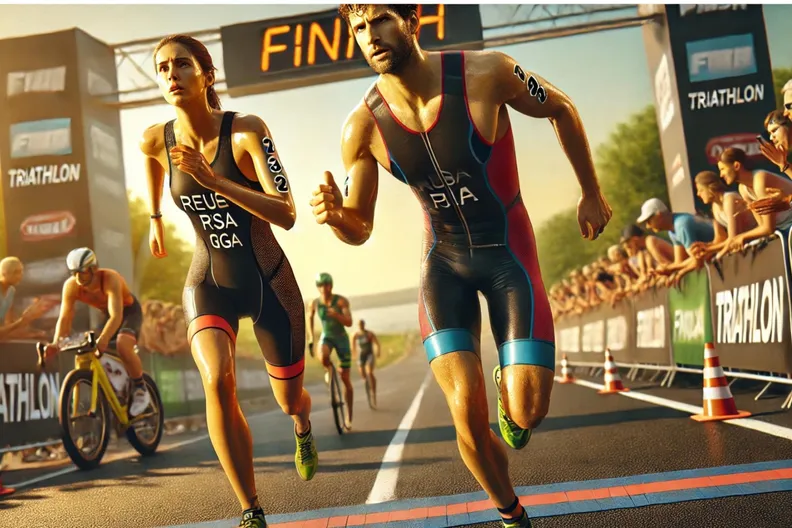The different distances in a triathlon
How long is a triathlon? A triathlon is held over various distances, which are specified by the International Triathlon Union (ITU) or the German Triathlon Union (DTU) and the national associations in the sports regulations. Typical distances, with slight variations to suit individual local conditions, are
Volksdistanz
Up to 750 meter swim
20 kilometer bike
5 kilometer run
Olympic distance
1.5 kilometer swim
40 kilometer bike
10 kilometer run
Middle distance
1,9 - 3 kilometer swim
80 - 90 kilometer bike
20 - 21 kilometer run
Long distance
1 - 4 kilometer swim
100 - 200 kilometer bike
10 - 42 kilometer run
These different course lengths make triathlon equally suitable for sprinters and endurance athletes.
Equipment required for triathlon
Depending on the length of the race, triathlon requires more or less specialized equipment in order to master all three disciplines of swimming, cycling and running. Here are some of the necessary pieces of equipment, broken down by the three disciplines:
General
Triathlon suit: A triathlon suit is specifically designed for the demands of the sport and allows the athlete to quickly switch between disciplines and achieve optimal performance.
Bottles and nutrition: During the triathlon, it is important to stay hydrated and get enough energy from food. Water bottles and energy gels are necessary to fulfill these needs.
Swim
Wetsuit: A wetsuit is needed for the swim portion to keep the body warm and provide additional buoyancy in the water. Depending on the water temperature, a wetsuit is either mandatory, optional or even prohibited in warm temperatures during triathlon competitions. These temperature limits vary depending on the federation.
Swimming goggles: Swimming goggles protect the eyes from chlorine and salt water and ensure clear vision underwater.
Biking
Bike: A suitable bike for the cycling part of the triathlon that is designed for fast speeds.
Bike helmet: A safe and suitable bike helmet is essential for protecting your head.
Running
Running shoes: A comfortable and well-fitting pair of running shoes is crucial for the final part of the triathlon.
In addition, other equipment such as a sports watch, sunglasses or a competition belt may be needed to achieve the best performance.
The rules of triathlon
Although there is not much to follow in a triathlon, you should familiarize yourself with the current sports regulations in advance to avoid disqualification. Even experienced athletes often break the rules unknowingly, even after several years of competing, because they simply don't know them (yet). If you are caught by a referee, however, you risk a penalty ranging from a simple warning to a time penalty to disqualification or even a ban from the competition.
Warning
Warnings are rather harmless offenses that can generally be "cured" during a competition. For example, it is not uncommon for an athlete to open their helmet strap too early. This could be a reason for a warning, where the athlete is briefly stopped and has to close the helmet again. For example, the helmet may only be opened once the bike has been placed on the stand.
Time penalty
For more serious offenses, the referee will show the athlete a blue card after an acoustic signal. For medium and long distances, this means that you have to go to a so-called penalty box and serve a 5-minute time penalty there. For shorter distances, the time penalty is 1 minute. Such a penalty is usually imposed for disregarding the slipstreaming ban when cycling. A distance of 12 meters must be maintained on the bike, as otherwise you would unfairly benefit from the slipstream of the rider in front. In some races, however, there is also a waiver of the slipstreaming ban - but the rules there are generally slightly different. If a triathlete receives more than two blue cards, they are automatically disqualified with a red card.
Disqualification
For serious offenses against the sporting regulations, the referee will issue a red card to the athlete after an acoustic signal. This will result in immediate disqualification. This happens, for example, in the case of deliberate environmental pollution, such as the deliberate disposal of waste on the race course.
Ban
Triathletes can be banned for an entire season by a national association if, for example, they take part in unauthorized events. Triathletes should always make sure that an official DTU approval number can be found in the invitation to an event. Only then may a triathlete start - otherwise this can result in a ban. The approval ensures compliance with the sports regulations by the organizer and thus contributes significantly to the safety of the participants
All important information can be found in detail in the Sports Regulations of the DTU. Detailed information on the individual competitions is also available to all participants in the competition briefing, which usually takes place a few minutes before the start of a triathlon.
If you are interested in a (first) triathlon the following articles may also be of interest to you: Triathlon: Jumping into cold water part 1 and part 2, as well as the guest post: What a first IRONMAN triathlon feels like and the guest post by Julia Viellehner, who we will never forget and will always remember as one of the most likeable people.






